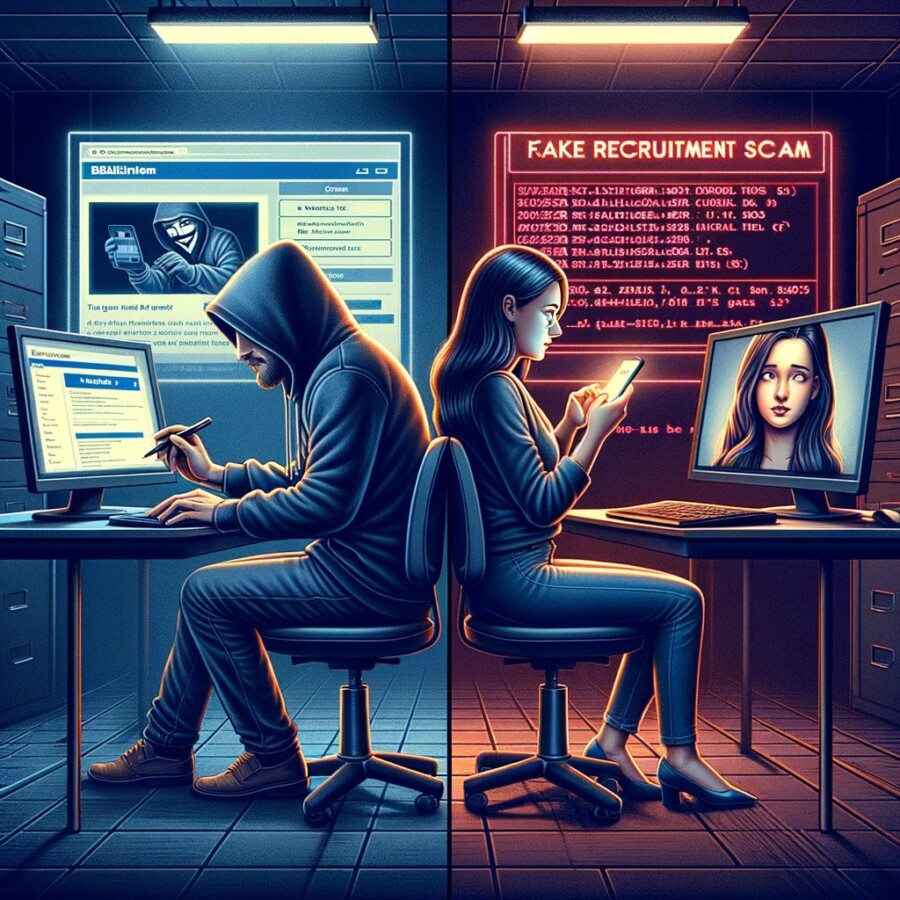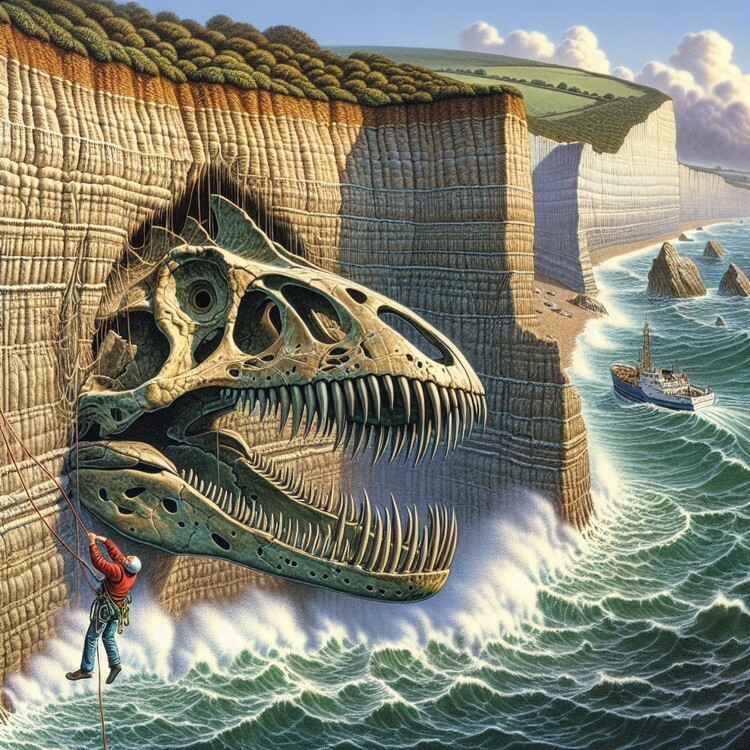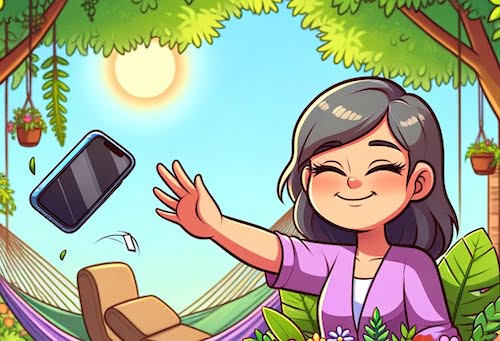A ‘hologram revolution’ may be on the horizon, according to a recent article by the BBC. The article highlights the opening of Australia’s Hologram Zoo, which features lifelike holographic displays of animals created using laser technology. The creator of the zoo, Bruce Dell, explains that the holograms are created by projecting objects into the air using laser light, giving the illusion of a real animal. The hologram show at the zoo uses new “depth” technology to make the animals appear larger and also incorporates sensory technology to enhance the experience.
The article also mentions that holographic technology is being used in other industries, such as aerospace and hospitality. Dell’s company, Axiom Holographics, has contracts with companies like Airbus and Honeywell, and is building a hologram aquarium for a luxury hotel owned by Bill Gates. Dell believes that holograms have the potential to revolutionize various industries, but notes that they have traditionally been expensive to produce. However, his company has found ways to reduce costs by developing algorithms that can create holograms using just one computer.
In addition to the Hologram Zoo, researchers at the Australian National University (ANU) are also exploring new holographic technologies. They are experimenting with meta-optics, or nano-photonics, which allow for the manipulation of light waves on a smaller scale. This technology could have various applications, such as turning reading spectacles into night-vision glasses and replacing diagnostic blood tests with breath tests.
Holographic techniques are also being used in the arts, as demonstrated by a play called Alex, which incorporates holographic images. The play, created by researchers at the Queensland University of Technology, aims to provide an arts-based clinical intervention for people with eating disorders. The holographic images are created using a special effects screen called a Hologauze, which captures the projected images and makes them appear as embodied characters on stage.
Overall, the article suggests that holographic technology has the potential to revolutionize various industries, from entertainment to healthcare. As the technology continues to advance and become more affordable, holograms may become a common sight in our everyday lives.
Original news source: Why a ‘hologram revolution’ could be on the way (BBC)
Listen
Slow
Normal
Fast
Group or Classroom Activities
Warm-up Activities:
– News Summary
Instructions: Have students read the article individually and then summarize the main points in their own words. They can then share their summaries with a partner or in small groups to compare and discuss.
– Opinion Poll
Instructions: Divide the class into pairs or small groups. Each group will come up with a question related to holographic technology and its potential impact on different industries. They will then conduct an opinion poll within the class, asking each student to share their opinion on the question. After collecting the data, each group will present their findings to the class and facilitate a discussion on the different perspectives.
– Vocabulary Pictionary
Instructions: Write down key vocabulary words from the article on separate pieces of paper and put them in a hat or bowl. Divide the class into teams. One student from each team will come up to the front of the class and choose a word from the hat without looking. They will then have to draw a picture to represent the word, while their team tries to guess what it is. The team with the most correct guesses wins.
– Future Predictions
Instructions: In pairs or small groups, have students discuss and make predictions about how holographic technology might be used in the future. They can consider different industries and brainstorm ideas for practical applications. After the discussion, each group will share their predictions with the class and engage in a debate on the feasibility and potential impact of the ideas.
– Sketch It
Instructions: Divide the class into pairs. One student will describe a holographic display or experience from the article to their partner, while the partner sketches what they imagine based on the description. After a set amount of time, they will switch roles. Once both students have had a turn describing and sketching, they will compare their drawings and discuss any differences or similarities.
Comprehension Questions:
1. What is the Hologram Zoo in Australia known for?
2. How are the holograms at the zoo created?
3. What industries besides entertainment are using holographic technology?
4. Which companies does Axiom Holographics have contracts with?
5. How has Axiom Holographics reduced the cost of producing holograms?
6. What are researchers at the Australian National University experimenting with in regards to holographic technology?
7. How is holographic technology being used in the arts?
8. What does the article suggest about the future of holographic technology?
Go to answers ⇩
Listen and Fill in the Gaps:
A ‘(1)______ revolution’ may be on the horizon, according to a recent article by the BBC. The article highlights the opening of Australia’s Hologram Zoo, which features lifelike holographic displays of animals created using laser technology. The creator of the zoo, Bruce Dell, explains that the holograms are created by projecting (2)______ into the air using laser light, giving the illusion of a real animal. The hologram show at the zoo uses new “”depth”” technology to make the animals (3)______ larger and also (4)______ sensory technology to enhance the experience.
The article also mentions that holographic technology is being used in other industries, such as aerospace and hospitality. Dell’s (5)______, Axiom Holographics, has contracts with companies like Airbus and Honeywell, and is building a hologram aquarium for a luxury hotel owned by Bill Gates. Dell believes that holograms have the potential to revolutionize various industries, but notes that they have traditionally been expensive to produce. However, his company has (6)______ ways to reduce (7)______ by developing algorithms that can (8)______ holograms using just one computer.
In addition to the Hologram Zoo, researchers at the Australian National University (ANU) are also exploring new holographic technologies. They are experimenting with meta-optics, or nano-photonics, which allow for the manipulation of light waves on a smaller scale. This technology could have various applications, such as turning reading spectacles into night-vision glasses and replacing diagnostic blood (9)______ with breath tests.
Holographic techniques are also being used in the arts, as (10)______ by a play (11)______ Alex, which incorporates holographic (12)______. The play, created by researchers at the Queensland University of Technology, aims to provide an arts-based clinical (13)______ for people with eating disorders. The holographic images are created using a special effects screen called a Hologauze, which (14)______ the projected images and makes them appear as embodied characters on stage.
Overall, the (15)______ suggests that holographic (16)______ has the potential to revolutionize various industries, from entertainment to healthcare. As the technology continues to advance and become more affordable, holograms may become a common sight in our everyday lives.
Go to answers ⇩
Discussion Questions:
Students can ask a partner these questions, or discuss them as a group.
1. What is a hologram and how does it work?
2. How would you feel if holograms were used in healthcare, such as for diagnostic tests or surgeries?
3. Do you think holographic technology will replace traditional forms of entertainment, such as live theater or movies? Why or why not?
4. Have you ever seen a hologram before? If so, what was your experience like?
5. How do you think holograms could be used in education?
6. Do you like the idea of holographic zoos? Why or why not?
7. What other industries do you think could benefit from holographic technology? Why?
8. How do you think holograms could impact the travel and tourism industry?
9. Would you prefer to see a live performance or a holographic performance? Why?
10. How do you think holographic technology could be used to improve accessibility for people with disabilities?
11. Do you think holograms could ever replace physical objects, such as books or paintings? Why or why not?
12. How do you think holographic technology could be used in advertising and marketing?
13. What ethical considerations do you think need to be taken into account when using holographic technology?
14. Do you think holograms could be used to create more immersive virtual reality experiences? Why or why not?
15. How do you think holographic technology could change the way we communicate with each other?
Individual Activities
Vocabulary Meanings:
Match each word to its meaning.
Words:
1. hologram
2. laser
3. illusion
4. depth
5. sensory
6. algorithms
7. meta-optics
8. special effects
Meanings:
(a) Mathematical instructions or rules used to solve problems or complete tasks
(b) The quality of appearing to be three-dimensional or having depth
(c) Techniques or visuals used to enhance or create illusions
(d) A device that produces a narrow, intense beam of light
(e) A false or misleading perception or appearance
(f) The study and manipulation of light waves on a small scale
(g) A three-dimensional image created using laser light
(h) Relating to the senses or sensation
Go to answers ⇩
Multiple Choice Questions:
1. What is the main focus of the article?
(a) The opening of Australia’s Hologram Zoo
(b) The use of holograms in the arts
(c) The potential of holographic technology
(d) The development of meta-optics technology
2. How are the holograms at Australia’s Hologram Zoo created?
(a) By using special effects screens
(b) By projecting objects into the air using laser light
(c) By manipulating light waves on a smaller scale
(d) By incorporating sensory technology
3. Which industries are mentioned as using holographic technology?
(a) Entertainment and healthcare
(b) Aerospace and hospitality
(c) Art and technology
(d) Reading spectacles and diagnostic blood tests
4. How has Axiom Holographics reduced the cost of producing holograms?
(a) By using meta-optics technology
(b) By incorporating sensory technology
(c) By developing algorithms that can create holograms using just one computer
(d) By projecting objects into the air using laser light
5. What is meta-optics, or nano-photonics, used for?
(a) Manipulating light waves on a smaller scale
(b) Creating holographic images
(c) Enhancing the experience of holograms
(d) Turning reading spectacles into night-vision glasses
6. What is the purpose of the play Alex?
(a) To showcase holographic technology in the arts
(b) To demonstrate the potential of holograms in healthcare
(c) To explore the use of holograms in entertainment
(d) To provide an arts-based clinical intervention for people with eating disorders
7. What is the special effects screen used to create holographic images in the play Alex called?
(a) Hologauze
(b) Laser light
(c) Depth technology
(d) Axiom Holographics
8. What does the article suggest about the future of holographic technology?
(a) It will only be used in entertainment and healthcare
(b) It will remain expensive to produce
(c) It will not become a common sight in everyday life
(d) It has the potential to revolutionize various industries
Go to answers ⇩
True or False Questions:
1. Holographic techniques are not being used in the arts, such as in a play called Alex that aims to provide an arts-based clinical intervention for people with eating disorders.
2. Axiom Holographics, the company behind the Hologram Zoo, has no contracts with companies like Airbus and Honeywell.
3. The hologram show at the zoo uses new “”depth”” technology to make the animals appear larger.
4. Holographic technology is being used in industries such as aerospace and hospitality.
5. Holograms have traditionally been inexpensive to produce, but Axiom Holographics has developed algorithms to increase costs.
6. Australia’s Hologram Zoo features unrealistic holographic displays of animals created using laser technology.
7. Researchers at the Australian National University are experimenting with meta-optics, which allow for the manipulation of light waves on a smaller scale.
8. The holograms at the zoo are created by projecting objects into the air using laser light.
Go to answers ⇩
Write a Summary:
Write a summary of this news article in two sentences.
Check your writing now with the best free AI for English writing!
Writing Questions:
Answer the following questions. Write as much as you can for each answer.
Check your answers with our free English writing assistant!
1. What is the Hologram Zoo in Australia and how are the holograms created?
2. What industries are currently using holographic technology?
3. How has Axiom Holographics reduced the cost of producing holograms?
4. What new holographic technologies are researchers at the Australian National University exploring?
5. How is holographic technology being used in the arts?
Answers
Comprehension Question Answers:
1. The Hologram Zoo in Australia is known for featuring lifelike holographic displays of animals created using laser technology.
2. The holograms at the zoo are created by projecting objects into the air using laser light.
3. Besides entertainment, holographic technology is being used in industries such as aerospace and hospitality.
4. Axiom Holographics has contracts with companies like Airbus and Honeywell.
5. Axiom Holographics has reduced the cost of producing holograms by developing algorithms that can create holograms using just one computer.
6. Researchers at the Australian National University are experimenting with meta-optics, or nano-photonics, which allow for the manipulation of light waves on a smaller scale.
7. Holographic technology is being used in the arts through plays like “Alex,” which incorporates holographic images created using a special effects screen called Hologauze.
8. The article suggests that holographic technology has the potential to revolutionize various industries and may become a common sight in our everyday lives as the technology continues to advance and become more affordable.
Go back to questions ⇧
Listen and Fill in the Gaps Answers:
(1) hologram
(2) objects
(3) appear
(4) incorporates
(5) company
(6) found
(7) costs
(8) create
(9) tests
(10) demonstrated
(11) called
(12) images
(13) intervention
(14) captures
(15) article
(16) technology
Go back to questions ⇧
Vocabulary Meanings Answers:
1. hologram
Answer: (g) A three-dimensional image created using laser light
2. laser
Answer: (d) A device that produces a narrow, intense beam of light
3. illusion
Answer: (e) A false or misleading perception or appearance
4. depth
Answer: (b) The quality of appearing to be three-dimensional or having depth
5. sensory
Answer: (h) Relating to the senses or sensation
6. algorithms
Answer: (a) Mathematical instructions or rules used to solve problems or complete tasks
7. meta-optics
Answer: (f) The study and manipulation of light waves on a small scale
8. special effects
Answer: (c) Techniques or visuals used to enhance or create illusions
Go back to questions ⇧
Multiple Choice Answers:
1. What is the main focus of the article?
Answer: (c) The potential of holographic technology
2. How are the holograms at Australia’s Hologram Zoo created?
Answer: (b) By projecting objects into the air using laser light
3. Which industries are mentioned as using holographic technology?
Answer: (b) Aerospace and hospitality
4. How has Axiom Holographics reduced the cost of producing holograms?
Answer: (c) By developing algorithms that can create holograms using just one computer
5. What is meta-optics, or nano-photonics, used for?
Answer: (a) Manipulating light waves on a smaller scale
6. What is the purpose of the play Alex?
Answer: (d) To provide an arts-based clinical intervention for people with eating disorders
7. What is the special effects screen used to create holographic images in the play Alex called?
Answer: (a) Hologauze
8. What does the article suggest about the future of holographic technology?
Answer: (d) It has the potential to revolutionize various industries
Go back to questions ⇧
True or False Answers:
1. Holographic techniques are not being used in the arts, such as in a play called Alex that aims to provide an arts-based clinical intervention for people with eating disorders. (Answer: False)
2. Axiom Holographics, the company behind the Hologram Zoo, has no contracts with companies like Airbus and Honeywell. (Answer: False)
3. The hologram show at the zoo uses new “”depth”” technology to make the animals appear larger. (Answer: True)
4. Holographic technology is being used in industries such as aerospace and hospitality. (Answer: True)
5. Holograms have traditionally been inexpensive to produce, but Axiom Holographics has developed algorithms to increase costs. (Answer: False)
6. Australia’s Hologram Zoo features unrealistic holographic displays of animals created using laser technology. (Answer: False)
7. Researchers at the Australian National University are experimenting with meta-optics, which allow for the manipulation of light waves on a smaller scale. (Answer: True)
8. The holograms at the zoo are created by projecting objects into the air using laser light. (Answer: True)
Go back to questions ⇧













